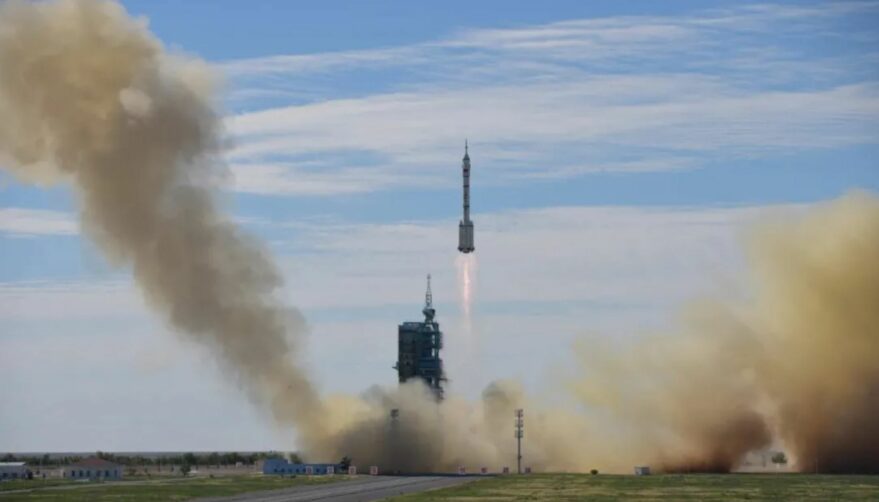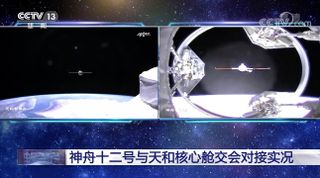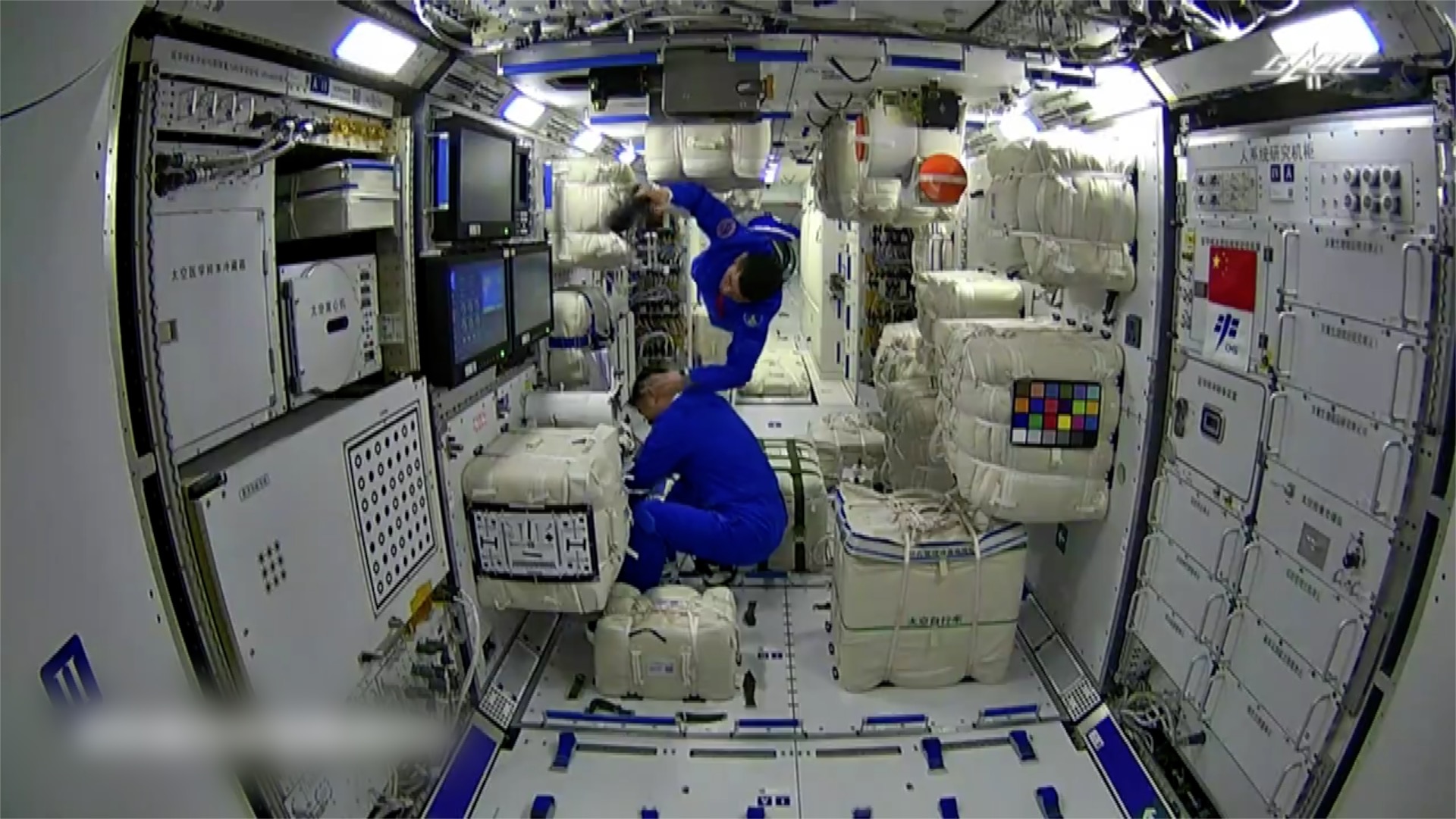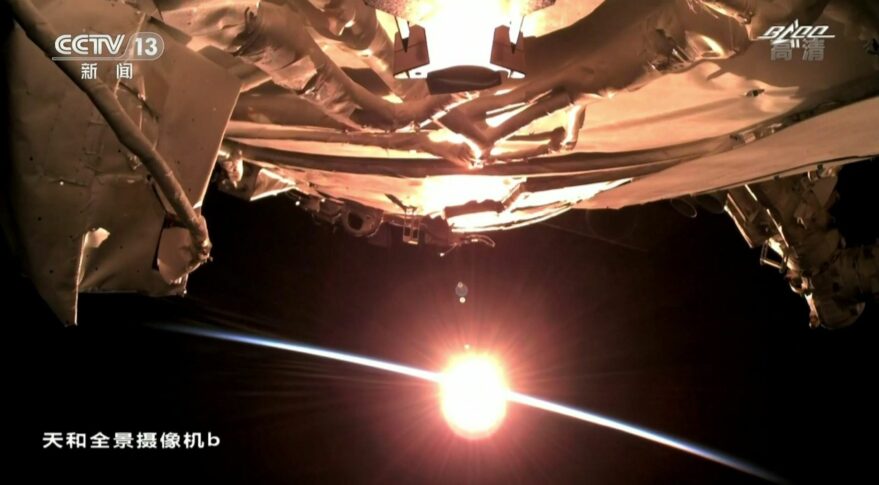Heavenly Ambition

"At this current stage, we haven't considered the participation of international astronauts, but their future participation will be guaranteed.""I'm aware that many countries have expressed their wish in this regard."Zhou Jianping, chief designer, China's manned space program"This will be the first crewed flight in the space station [construction] phase, and I'm lucky to be able to have the 'first baton'."Chinese Astronaut Nie Haisheng, 56
 |
| Liftoff of the Long March 2F carrying Shenzhou-12 at 9:22 p.m. Eastern, June 16. Credit: CASC |
China's growing near-Earth presence in space challenges the leadership in orbital space of the United States. China has accrued yet another space milestone in three Chinese astronauts reaching an unfinished space station in a successful crewed flight. The astronauts reached Tianhe -- the module which will represent future crews' living quarters once the space station has been completed.
They arrived via Shenzhou-12 ("Divine Vessel"), to board the module which will be their home and operations base for the next three months.
Marking the longest low-Earth orbit residence by any Chinese national. Due to be completed by the end of 2022, the space station will become the alternative to the U.S.-led International Space Station, now two decades in operation and scheduled tentatively for retirement in 2024.
 |
The International Space Station (ISS) is shared for the most part between the United States, Russia, Japan, Europe and Canada, with Russia and the U.S. the principle players. Once it is decommissioned China will have the distinction of being the proud operator of the sole active space station.
A singular distinction that China will be more than happy to laud itself for. This exploit is, after all, a significant technical achievement.
And for a nation seeking prestige, influence and greater power hungering for recognition, the situation has the potential for Beijing to shape future episodes of space exploration and pioneering, including regulations for near-Earth space. Much of which is already monopolized by Chinese satellites.
Shenzhou-12 is the third of 11 scheduled Chinese missions, four of which are to be crewed, which are a necessity to ensure China's first full-fledged space station is completed within the time-frame anticipated.
Shenzhou launch site is located in northwestern Gansu province. Tianhe, a cylinder-like module roughly the size of a city bus, was launched in April, now awaiting ongoing construction.

The work of the astronauts, Nie Haisheng, Liu Boming, and Tang Hongbo has been cut out for them in testing technologies while on Tianhe, including the life-support system, critical to their own security during their three-month stay. The astronauts are set to be monitored in how they cope in space physically and psychologically.
A follow-up mission to the space station is set to last for six months. China spent the last decade in development of technologies enabling it to build its own space station since it has been barred by U.S. law from working with NASA and from travelling to the International Space Station. Along with building a space station of its own, China plans missions to the moon, to Mars and other planets.
 |
| A view of the Sun on the horizon from Tianhe ahead of the Shenzhou-12 docking. Credit: BACC/CCTV/screenshot |
Labels: China, Chinese Space Station, Space Program

<< Home